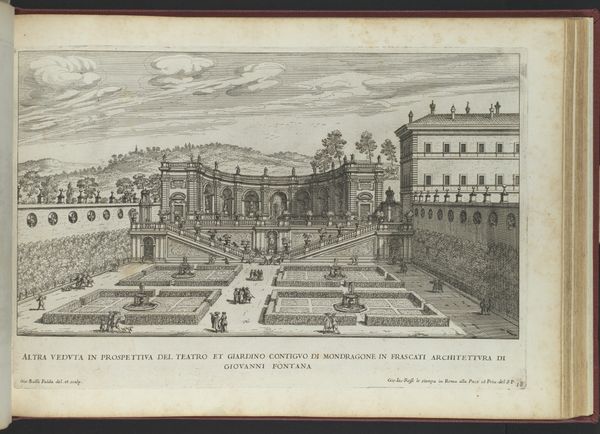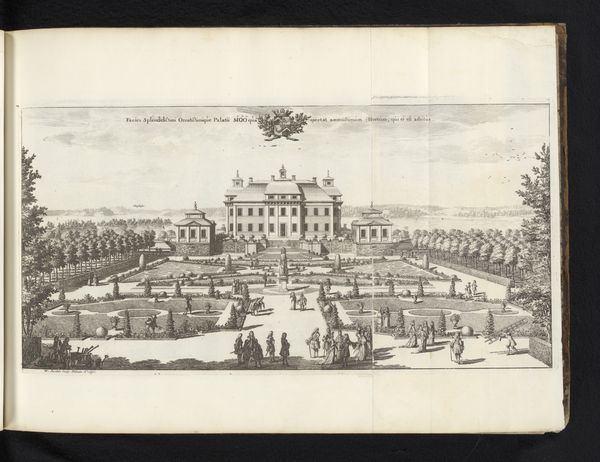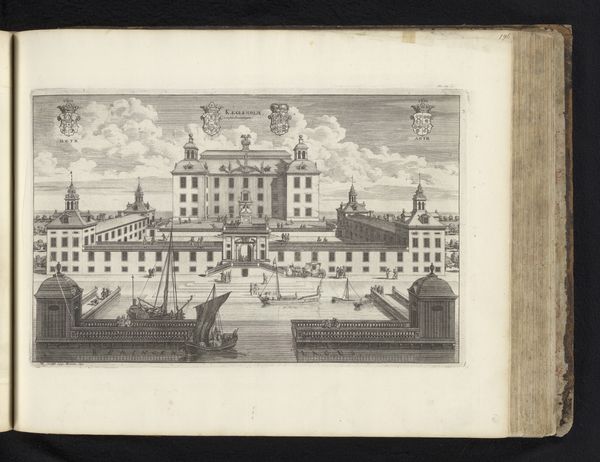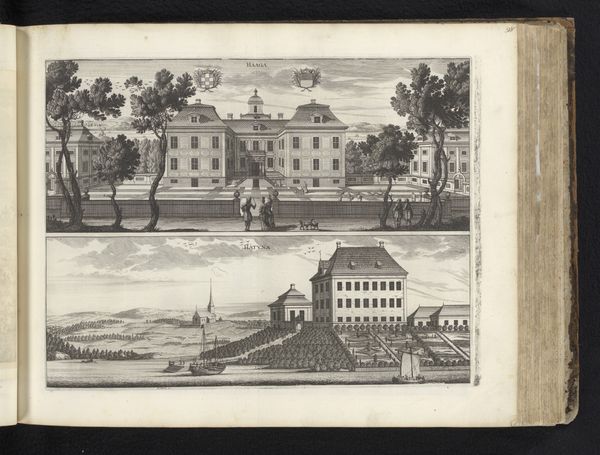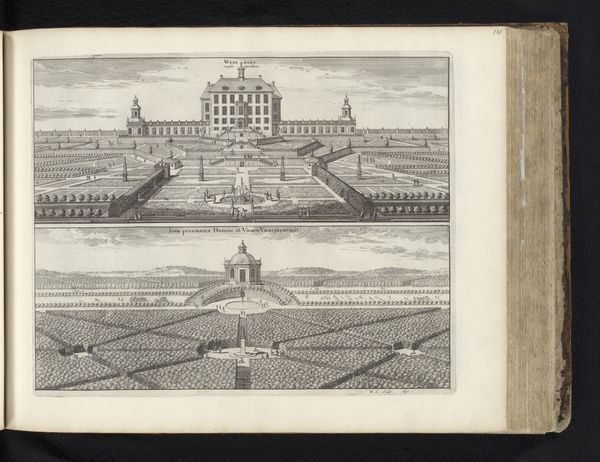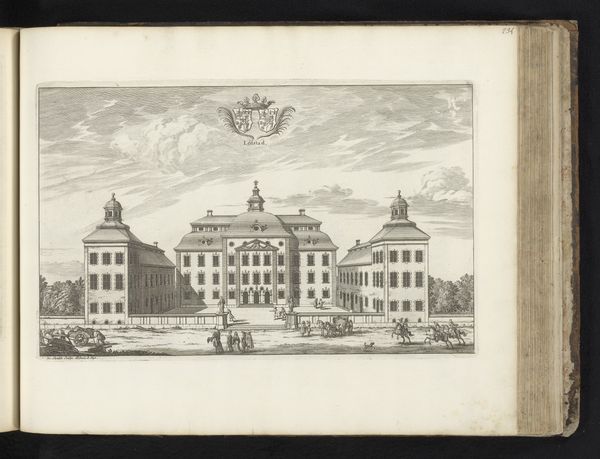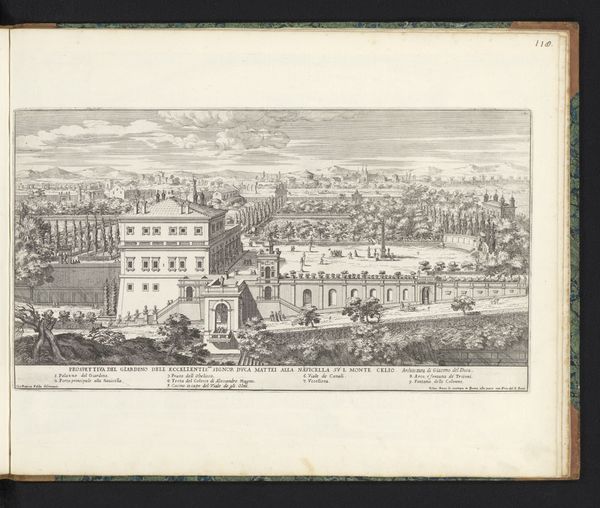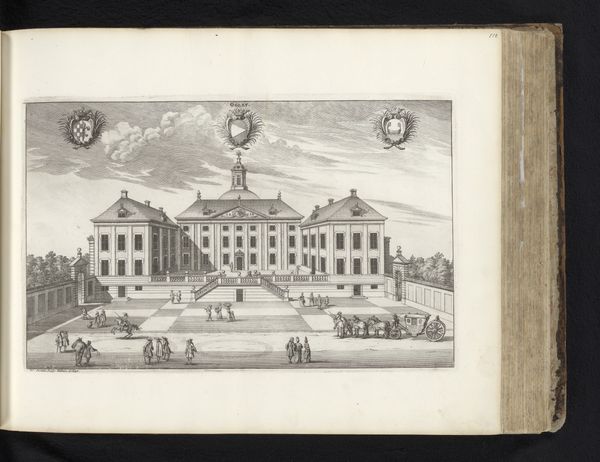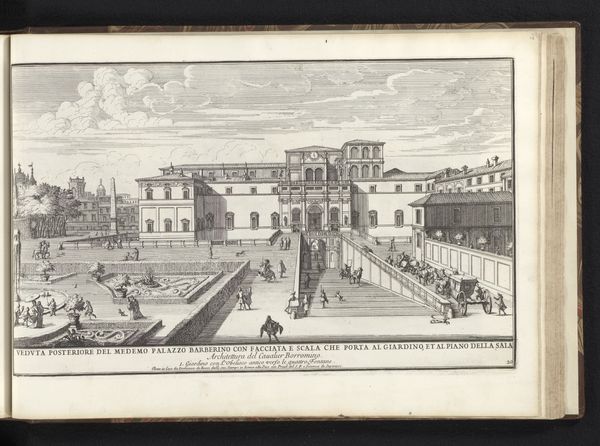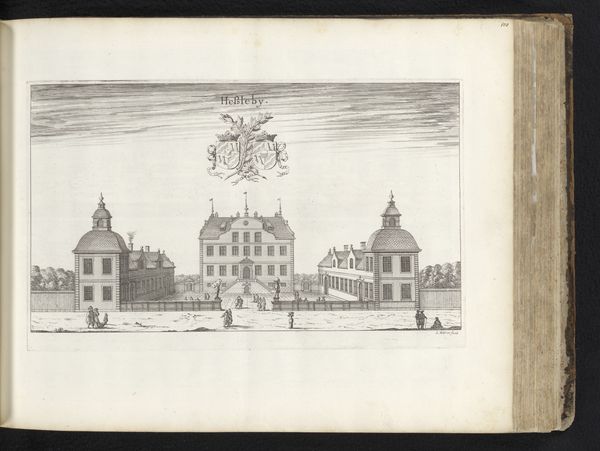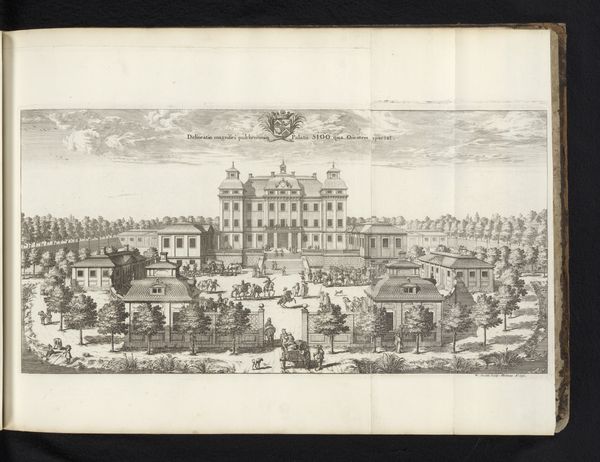
drawing, paper, engraving
#
drawing
#
aged paper
#
toned paper
#
homemade paper
#
paper non-digital material
#
baroque
#
dutch-golden-age
#
sketch book
#
landscape
#
paper
#
personal sketchbook
#
folded paper
#
pen and pencil
#
cityscape
#
paper medium
#
sketchbook art
#
engraving
Dimensions: height 217 mm, width 336 mm
Copyright: Rijks Museum: Open Domain
Editor: Here we have "Gezicht op slot Ållonö," an engraving from around 1690 by Willem Swidde, housed in the Rijksmuseum. The first thing that strikes me is how formal and rigidly structured the landscape appears. What can you tell me about this piece? Curator: What strikes me immediately is the undeniable demonstration of power, seen not just in the architecture, but in the subjugation of nature itself. Do you notice how the artist meticulously renders the gardens, not as wild and untamed, but rather organized into geometric shapes, reinforcing a controlled and manufactured environment? Editor: Yes, I see that. The landscaping seems as important as the building itself. Why is that significant? Curator: In this era, particularly within aristocratic circles, land ownership and its visual representation through carefully designed landscapes were crucial signifiers of status, authority, and economic strength. Swidde's engraving thus becomes more than just a pretty picture; it's a document reflecting societal hierarchies and the owner's capacity to command resources and labour. How does this power dynamic sit with you? Editor: It definitely makes me reconsider my initial view. It's not just a landscape, it’s a statement about dominance. It makes me think about the lives of those who worked on the estate and weren’t reflected in the picture. Curator: Exactly! Consider, for example, whose labour made this possible. How might those voices be brought into our understanding of the work? Editor: I guess I was so caught up in the artistry that I overlooked the socioeconomic implications embedded within it. Curator: Which demonstrates how art is intrinsically linked with social history. Exploring these links brings the piece to life, challenging the conventional narrative and highlighting alternative perspectives. Editor: I never thought I’d view an old landscape with a contemporary lens. Thanks for making me think outside of the aesthetic qualities.
Comments
No comments
Be the first to comment and join the conversation on the ultimate creative platform.
